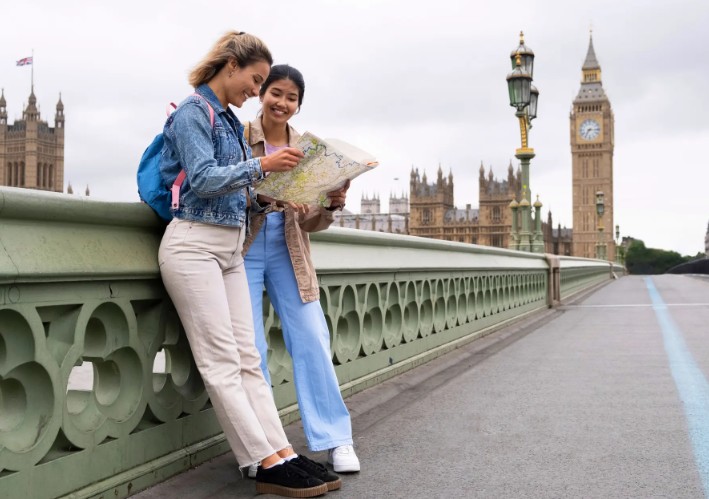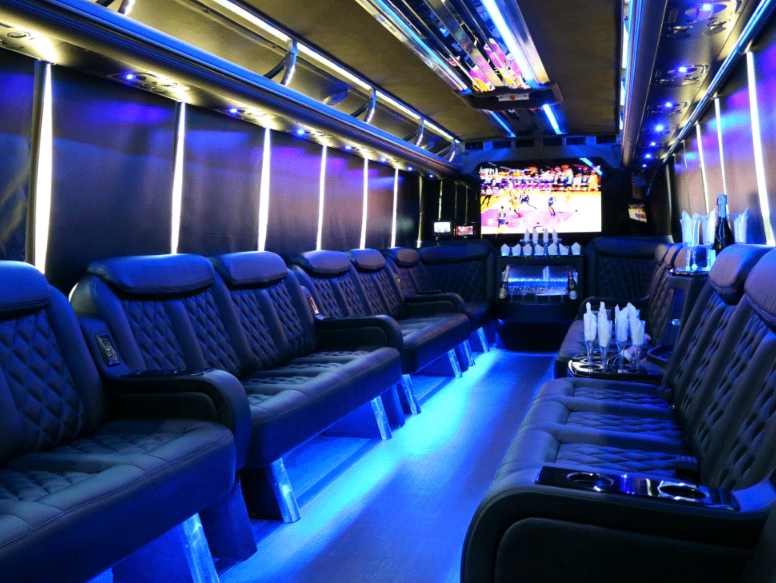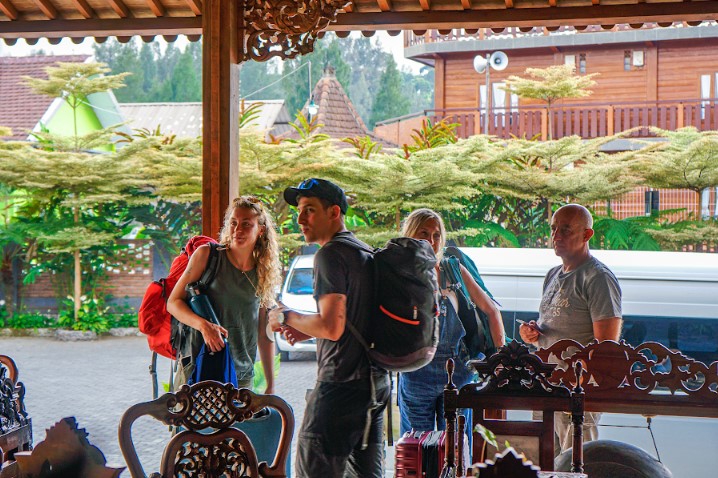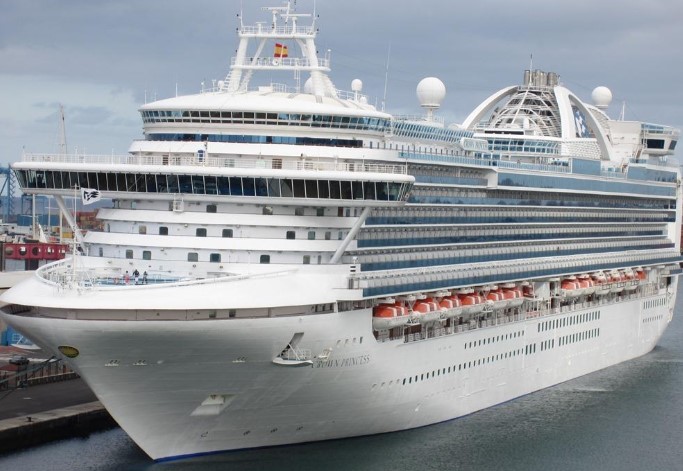- More than 1 in 4 U.S. adults have some kind of disability.
- Even when travel spaces meet ADA requirements, they aren’t always accessible for all.
- There are simple things we can all do to accommodate fellow travelers with disabilities.
“Traveling with disabilities” is a 10-part series focusing on the experiences of travelers with disabilities. This is part of our continuing mission to highlight underrepresented communities in travel. If you’d like to contribute to our future reporting and share your experience as a source, you can fill out this quick form.
Linda Williams doesn’t make dinner reservations the way most of us do.
She makes a point to ask others about their accessibility needs first. The clinical psychologist and founder and CEO of Invisible Disability Project knows
more than 1 in 4 U.S. adults have some kind of disability, whether or not it’s obvious to others.
“There’s probably something that exists in my friend group that I can’t see,” she said. “And unless I extend an invitation, they may not feel comfortable to speak up.”
Being visually impaired herself, she knows what it’s like to feel left out.
There are countless little things we can all do to accommodate people with disabilities. Over the past few months, USA TODAY has explored some of the unique but prevalent challenges travelers with disabilities face. Here are seven things USA TODAY readers and contributors with disabilities want fellow travelers to know:
WHAT IS ACCESSIBLE TRAVEL?:It varies family to family
‘CRAWLING TO MY SEAT’:Some travel experiences can be avoided with better technology
1. Don’t stare, but don’t ignore either
“My mom always used to say, ‘Instead of staring at me, ask me why I’m in this wheelchair so that I can educate you about disabilities,’ ” said Marta Rivera who has multiple sclerosis, as her late mother did.
Rivera’s children hated when other people stare at their grandmother, but being ignored can also be hurtful.
“If you see somebody attempting to get into a building, it costs you nothing to hold the door open,” Rivera said. “I can’t tell you how many times I was trying to get through a door with my mom’s wheelchair and people would just let it slam on us, and it’s just so humiliating.”
2. Acknowledge and engage with people with disabilities

“I know that the world is not built for us, but the fact that you’re acknowledging that … in an attempt to make it a little easier, that speaks volumes,” said Bethany Hildebrandt, whose daughter Kaylee, has cerebral palsy, among other medical complexities, and is considered nonverbal because only her family can understand her speech.
Hildebrandt calls American Disabilities Act guidelines the bare minimum for hotels and other travel entities and wishes people with disabilities would be invited to the table when it comes to designing spaces and experiences to accommodate them.
IS YOUR DOG A CERTIFIED GOOD BOY?:You might need proof when traveling abroad with a service animal.
MY TRIP TO PATAGONIA:‘The right wheelchair will take you anywhere a pair of legs can’
Deborah Dopkin, a bilateral amputee, says she could write a whole book on bathroom accessibility.
“Roll-in showers where it is impossible to reach the shower controls from the shower bench (are) a frequent problem, as are towel rods and robe hooks that are not reachable,” Dopkin said. “Most hotel bathrooms in ADA rooms feature sinks that one can wheel under, but the mirrors are hung so high on the wall as to be useless from a wheelchair.”

She says closet rods are also often out of reach and mattresses can be “so high off the ground that it is dangerous to transfer from a wheelchair to the bed.” That’s assuming she can get in the room in the first place.
“The simple act of opening the door to the room – often heavy and spring-loaded – and wheeling into the room would be comical if it weren’t nearly impossible to manage alone,” Dopkin said. “This is true for public bathrooms as well.”
“Communicate with someone who is living it,” Hildebrandt suggested to people who design these spaces. “Confer with them when you’re making these choices or decisions about what this looks like in real time.”
3. Know that COVID complicates everything

While many countries have relaxed COVID-19 restrictions for travelers, we’ve seen throughout the pandemic that things can change very quickly. Travelers with disabilities, who require careful planning, may not be able to pivot last minute.
“In November, we had to cancel a trip to Vienna because the day before we were scheduled to leave, Vienna closed its borders,” said Judy Tudor, a Fora travel adviser who is paraplegic. “We wondered what would have happened if we were already on our flight when this change occurred and arrived in Vienna, only to be told we could not enter. This is an inconvenience for any traveler, but for travelers with disabilities who need special accommodations or arrangements, they can be left with very limited options to make changes.”
Pandemic-related staff shortages may also make travel more difficult.
“Many travelers with disabilities often call ahead to hotels, restaurants and attractions to ask questions about accessibility or make specific requests for their visit,” Tudor said. She’s found personalized services like that less available and newer staff to be unfamiliar with accessibility issues.
TRAVELERS YOU WON’T FIND AT AIRPORTS:COVID impedes travel for people with disabilities
4. Center people with disabilities

“Think, ‘OK, where in my environment might someone with various diverse bodily needs bump up against a barrier that prevents them from fully accessing the space?’ ” Williams of the Invisible Disability Project said.
She acknowledged the difficulty in doing so, particularly for disabilities that may not be seen.
“If I’m an able-bodied person who sees and hears and smells and ambulates, how in the world can I imagine this?” she asked. “We can, actually, by centering just that idea that bodily diversity exists.”
5. Don’t assume ability

“Don’t presume anyone’s ability status – especially when it comes to carrying luggage, walking longer distances, taking the stairs, etc.,” said Amy Gaeta, a Ph.D. student and disability rights activist. “This includes people who look and don’t appear disabled as well as people with mental illnesses and learning disabilities.”
Gaeta has nerve damage in one leg as well as multiple invisible disabilities, including anxiety and post-traumatic stress disorder.
“If traveling with a disabled person, ask them what you can do to be a better travel partner,” she said. “If your disabled traveler partner agrees to it, inform any travel attendant staff that a disabled passenger is aboard and ask what options they (may) have to make the trip more accessible and comfortable for them.”
‘ENDO HAS STOLEN SO MUCH’:Traveling with endometriosis requires planning

Craig Harms wears a “deaf” sticker on his shirt when he travels so others can tell he’s lost his hearing.
“It helps getting through TSA and boarding, and airport workers seem much more accommodating knowing that I can’t hear rather than judging me as being obstinate or suspicious-acting,” he said.
“Please be patient with us,” he added. “If there are miscommunication problems, which occur, please resolve the issue instead of taking the easy way of walking off and ignoring us. And please don’t think us rude if you try to talk to us and we ignore you – our ability to communicate effectively was the first thing robbed of us.”
6. Don’t forget people with disabilities

“Using a guide cane allows other people to know I am visually impaired, but the downside to pulling out the cane when traveling is being made to wait,” said Maxine Freedom Starr, MSW, a wellness assurance counselor with the Center for Independence of the Disabled, New York. “People often see that disabled people get to skip lines and go first for a lot of things, but there are equally times when I am made to wait for assistance to arrive, assistance I do not require most of the time.”
She said that many places, like airports and attractions, see visually impaired people as a liability.
“I am not allowed to walk freely or service myself despite saying I am physically able and competently able to do so,” she said. “The very thing I try hard to avoid is requesting assistance when out because when it comes to the visually impaired, it is frequently ‘out of sight, out of mind.’ I have been left in empty rooms, put in corners, missed half of the event I was attending, missed meals and forgotten altogether.”
‘FORGOTTEN’:Legally blind traveler left in an airport basement for hours
7. Assume the best of others

“Just be nice. Assume that people are doing their best,” said Shannon Rosa, senior editor of Thinking Person’s Guide to Autism. Her son Leo is autistic, and her other two kids are neurodivergent.
“Even if we look different, even if we behave differently, we have as much right to be in public places as anybody else,” she said. “So don’t be unkind.”
‘MY KIDS DON’T WANT HUGS AND KISSES’:The cultural dimension of traveling with an invisible disability
‘TAKE IT SLOW’:Florida theme parks have accessibility programs but they still require planning
Rosa notes that things that may not be a big deal to other people, like making eye contact or adjusting to flickering fluorescent lights, can be tough for some people who are autistic.
“I think it’s really important if what we are invested in is the happiness and well being of our children who have disabilities, even if they’re not apparent to other people, that absolutely try to accommodate them the best we can and try not to shame them for when they’re having a difficult time because they need support,” she said. “They don’t need shaming.”
Contributing: Bailey Schulz, USA TODAY





More Stories
10 Power-Packed Suitcase Packing Tips for Effortless Travel
Unleashing Solo Adventures: Tips for Traveling Alone
Travel Tips for Beginners: Navigating Your Journey with Confidence